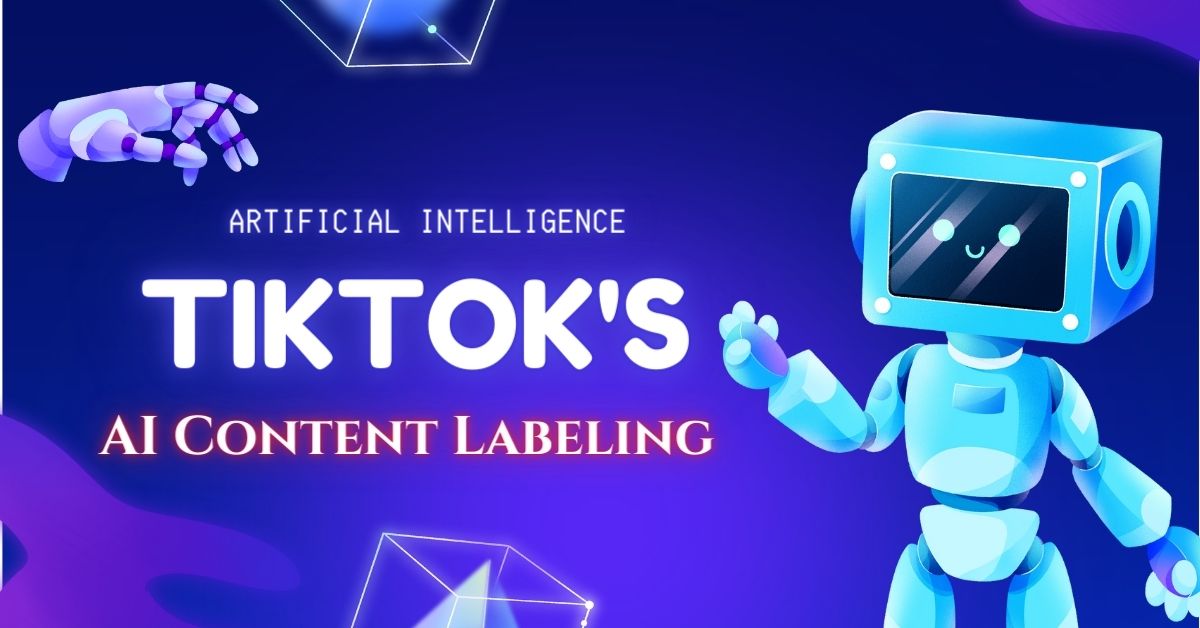
Introduction
TikTok, the widely used video-sharing app, has made a big decision. They will now tag videos made with AI when they’re uploaded from external sources. This shows where the content comes from. TikTok wants to be clear about this. They’re the first to do it.
TikTok’s proactive stance on AI content labelling stems from a deep sensitivity about the possible spread of misinformation on the network. By clearly identifying AI-generated material, the business hopes to empower its customers to distinguish between truth and lies, resulting in a more aware and trustworthy digital environment.
According to Adam Presser, TikTok’s Head of Operations, Trust, and Safety:
“AI offers tremendous creative opportunities, but it may perplex or mislead audiences if the source of the content is unknown. Labelling helps to understand this context, which is why we annotate AIGC generated with TikTok AI effects and require authors to label real AIGC for more than a year.
Using The Power of Metadata
At the core of TikTok’s endeavour to label AI-generated content lies an innovative technology dubbed Content Credentials, created by the Coalition for Content Provenance and Authenticity (C2PA). This state-of-the-art solution facilitates the addition of metadata to digital content, enabling platforms like Tik Tok to promptly identify and tag AI-generated material.
The functionality of Content Credentials
Metadata Integration: Content Credentials technology integrates specific metadata into digital content, encompassing images, videos, and audio files.
Immediate Identification: TikTok’s systems can swiftly distinguish and categorize AI-generated content by examining the embedded metadata. Automated Labeling: Once recognized, the AI-generated content receives automatic labelling, furnishing users with essential context and transparency.
TikTok’s commitment to AI content labelling goes beyond its platform. The company has partnered with the Adobe-led Content Authenticity Initiative, a collaborative effort to promote the widespread adoption of Content Credentials throughout the industry.
Dana Rao, Adobe’s Executive Vice President, General Counsel, and Chief Trust Officer, emphasised the importance of TikTok’s cooperation.
While TikTok’s AI content labelling strategy focuses on external AI-generated content, the site understands the value of enabling its own creator community. Over the next months, Content Credentials will be connected to AI-generated content created on TikTok, allowing users to readily identify the video’s origin and development process.
Furthermore, Tik Tok has always encouraged creators to flag AI-generated or extensively modified content. The platform also requires the labelling of all AI-generated material that includes realistic visuals, audio, and video, demonstrating its commitment to transparency.
Despite efforts to increase openness, Tik Tok remains excited about the creative possibilities of AI technology. As Presser stated, the platform’s users and producers are enthused about the prospects AI provides for increasing creativity and establishing meaningful interactions with audiences.
AI’s Impact on Content Creation
- Visual Effects: AI-powered tools can generate stunning visual effects, enabling creators to push the boundaries of their artistic expression.
- Personalized Experiences: AI algorithms can analyze user preferences and tailor content recommendations, enhancing the overall user experience.
- Automated Editing: AI-assisted editing tools can streamline the content creation process, allowing creators to focus on their artistic vision.
Legal Challenges
Tik Tok’s AI content labelling plan is happening at the same time as some big legal fights about what will happen to Tik Tok in the U.S. Lately, Tik Tok and its parent company, ByteDance from China, have gone to court to fight against a new American law. This law would stop Tik Tok unless it gets sold to someone the government approves.
The lawsuit says that this new law is not fair to Tik Tok and it’s a big problem for freedom of speech. While this legal fight keeps going, TikTok’s promise to be clear about its content and use AI responsibly could really change the rules.
Embracing the Future of AI-Driven Content
As AI technology gets better and better, it’s super important to make sure content is clear and responsible. Tik Tok is leading the way by automatically tagging content made with AI. This sets a big example for the future, where AI and human-made content can work well together.
TikTok is making sure users know what’s real and what’s not, which keeps its platform trustworthy. This helps make the internet a safer and more reliable place for everyone.
Conclusion
TikTok is the first video-sharing platform to automatically label AI-generated content, which is a big step towards being responsible with AI. They’re using advanced tech like Content Credentials and working with other big companies to make sure their content is clear.
This move by TikTok shows that we can use AI in a smart and safe way. It’s like a guiding light, showing us how we can make the future better with both cool new tech and responsibility.
Frequently Asked Questions
Why is TikTok taking a proactive stance on AI content labelling?
TikTok wants to address concerns about misinformation and empower users to differentiate between AI-generated and human-made content.
What technology does TikTok use to label AI-generated content?
TikTok utilizes Content Credentials technology, developed by the Coalition for Content Provenance and Authenticity (C2PA), to attach metadata and identify AI-generated material.
You May Like To Read